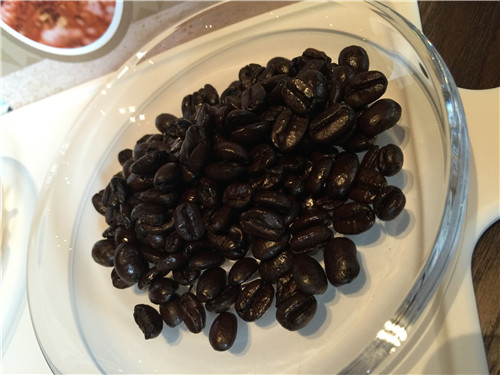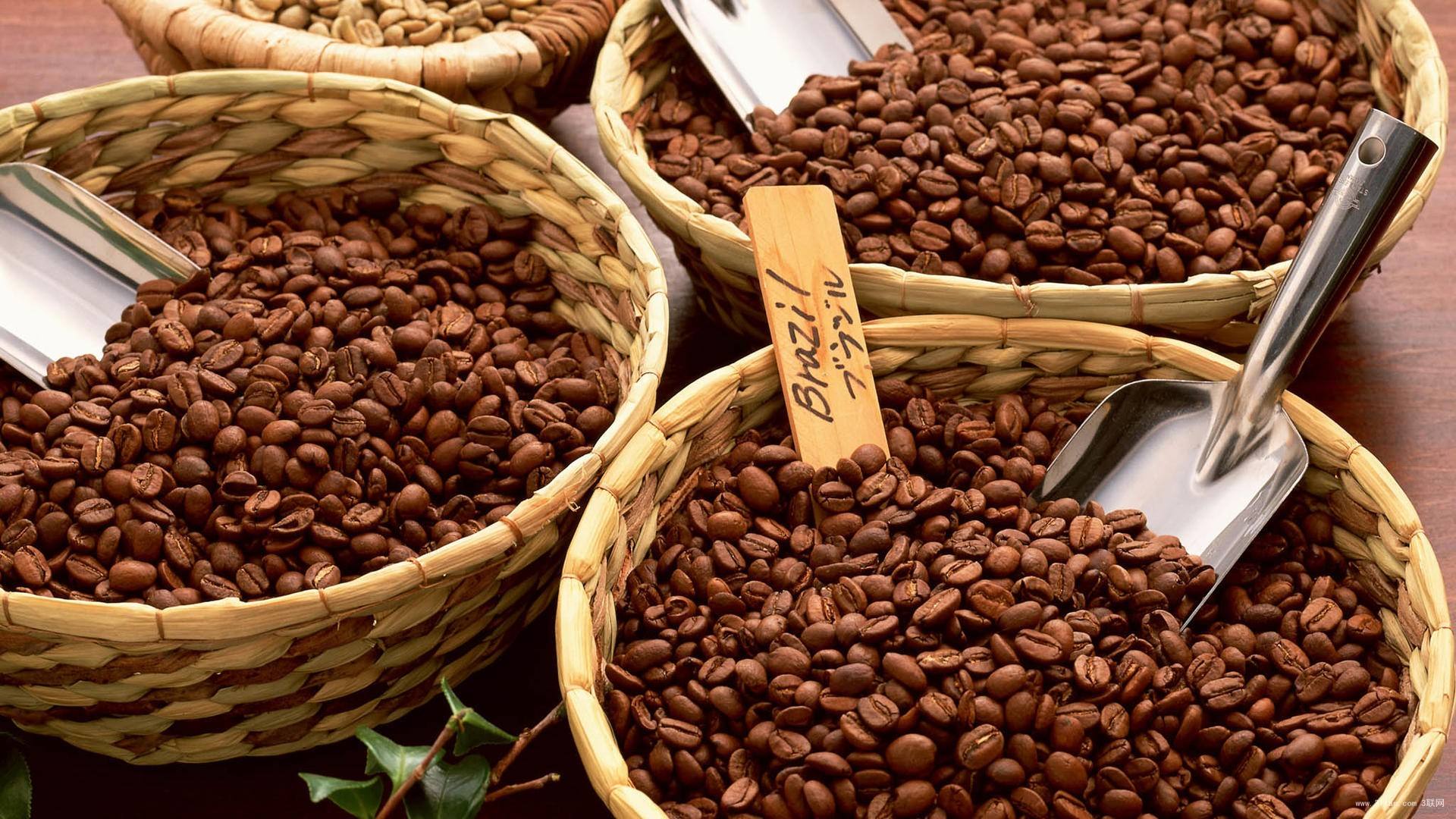How about the flavor of Peruvian coffee beans describe the planting history and characteristic producing areas

For professional baristas, please follow the coffee workshop (Wechat official account cafe_style)
Peruvian Coffee, a rising Star in Coffee Industry
As a rising star in the coffee industry, Peruvian coffee is gradually opening up its popularity and entering the international market. Peruvian coffee has always been used as one of the stable and mellow mixed beans of comprehensive coffee. Peruvian coffee has a mellow taste and the right acidity, and this lukewarm coffee attitude has made more and more people like it.
Peru is located in western South America, with a coastline of 2254 kilometers. The Andes runs from north to south, and the mountains account for 1% of the country's area. it belongs to the tropical desert region with a dry and mild climate. Peruvian coffee is mostly grown at the foot of the Andes, where it is rich in traditional Central American top coffee beans.
Peru is a huge and diversified land for them to produce a large number of different kinds of coffee beans, Peru can produce very high-quality Peruvian coffee. In general, these coffee beans have the gloss of Central America, but they are all packaged in South American flavor. High-quality organic venues do have more rural coffee characteristics. As long as these coffee beans continue to add interesting flavors rather than weaken them. Such a cup of Peruvian coffee has all the bright and deep tastes. When a cup of ordinary Peruvian coffee is in your hand, you don't have to try to taste whether it is good or not.
Peruvian coffee beans are best known for their coffee beans from Chimacha Mayou in the middle and Cusco in the south. In addition, some areas in northern Peru also produce characteristic organic coffee. Organic coffee is made of beans grown in the shade of trees. Although the yield of coffee beans is not high because of the method of planting in the shade, its quality can reach the level of gourmet coffee. This is because shading trees can slow down the ripening of coffee trees, help coffee grow fully, make it contain more natural ingredients, breed better flavors, and reduce caffeine content.
Peruvian coffee is grown in a planned way, which has greatly increased coffee production. Its rich acidity and mellow smoothness are its most prominent features. Peruvian coffee has a soft sour taste, medium texture, good taste and aroma, and is an indispensable ingredient in the production of comprehensive coffee. High-quality Peruvian coffee, with strong aroma, smooth, layered, rich sweet, elegant and mild sour taste, will quietly awaken your taste buds.
Compared with high-quality organic Peruvian coffee, the difference between ordinary organic Peruvian coffee and high-quality organic Peruvian coffee is huge: relatively cheap beans are not only poor in quality, but often have obvious defects in the cup. Especially the grass flavor, overfermented flavor. It takes a lot of work to find good Peruvian coffee beans among a lot of middlemen or other people who can buy them. However, it also takes a lot of hard work to pick sample beans. But that must be better than working hard in piles of papers.
Peruvian Coffee, a rising Star in Coffee Industry
Geographical environment
Peru is located in western South America, covering an area of 1285216 to 2. It is bordered by Ecuador and Colombia to the north, Brazil to the east, Chile to the south, Bolivia to the southeast and the Pacific Ocean to the west. The coastline is 2254 kilometers long
Peruvian Coffee, a rising Star in Coffee Industry
Peruvian coffee is grown at a temperature of 18Mui 26 degrees and annual precipitation 700--1500mm. It is made up of Arabica varieties and has been certified as an organic farmer by the International Organic crop Development Association (CCIA). The coffee here is famous for its soft coffee with a mixture of fresh cheese and caramel and a sweet aftertaste. Benefiting from a number of import and export enterprises, Peru has become a representative producer of organic farmers' coffee in order to obtain investment in farms and processing plants that meet organic farmers' standards. Like coffee in other South American countries, Peruvian coffee is not well known in the coffee market. Although large sales organizations have carried out advertising campaigns in places such as Colombia or Brazil, Peru has no strategy for sales or exports. Although the popularity is not very high, it does not mean it is tasteless. Some people think Peruvian coffee is more delicious than Brazilian or Colombian coffee.
Today, let's introduce the characteristics of coffee beans from Peru, an ancient civilization. To put it simply:
1. It is internationally certified as organic coffee beans.
two。 Low caffeine
Peru is most famous for its coffee beans produced in the central part of the country and Cusco in the south. In addition, some areas in the north of Peru also produce characteristic organic coffee. Organic coffee is made of beans grown in the shade of trees. Although the yield of coffee beans is not high because of the method of planting in the shade, its quality can reach the level of gourmet coffee. This is because shading trees can slow down the ripening of coffee trees, help coffee grow fully, make it contain more natural ingredients, breed better flavors, and reduce caffeine content. Peru is the world's largest producer and exporter of organic coffee, mainly to the United States.
The so-called decaffeinated coffee, as its name implies, is coffee with only a small amount of caffeine. Coffee contains many ingredients and substances, among which caffeine has an obvious effect on the human body. For many people who are addicted to coffee but whose physical condition does not allow caffeine, low-caffeinated beans are the best choice.
The steps of low-cause treatment can only be carried out in the state of raw coffee beans. Today, there are three main types of treatments to remove caffeine: traditional / European treatment (European Process), Swiss water treatment (SWP,Swiss Water Process), and carbon dioxide supercritical treatment (CO? Process). The Peruvian raw beans in the coffee shop use Swiss water treatment (if you are interested in other low-caffeinated treatments, see here), what is Swiss water treatment?
Swiss Water treatment method (The Swiss Water-Only Process): using this commercially developed and efficient treatment method, there are two major steps. The first step is to pour the raw coffee beans into hot water, which will remove almost all the flavor factors in the raw coffee beans, including caffeine, and discard the original batch of raw coffee beans. After that, the hot water loaded with all flavor factors is filtered out by activated carbon filter, and the rest is hot water full of pure flavor factors, which is called "flavor saturated water" (Flavor-charged Water) in Swiss water treatment. This kind of water contains all the flavor factors that should be found in raw coffee beans, but lacks caffeine. Is the most important medium in the next decaffeinated process.
The second step is to soak a new batch of raw coffee beans in flavor-saturated water full of flavor factors and non-caffeine. This releases caffeine in raw coffee beans, but does not release flavor factors. In this way, the original flavor of raw coffee beans will not be impaired too much. Obviously, the flavor factor in the flavor saturated water is already close to saturation, so it can no longer dissolve more flavor factors, but there is still a lot of room to dissolve caffeine. After this process of removing caffeine and retaining flavor factors, raw coffee beans are directly dried and sold, while the flavor saturated water that absorbs caffeine can be used repeatedly with activated carbon filters to remove caffeine.
Coffee is high-quality and balanced and can be used for mixed drinks.
Peru, whose full name is the Republic of Peru (Spanish: Rep ú blica del Per ú), is a country in western South America, bordered by Ecuador and Colombia to the north, Brazil and Bolivia to the east, Chile to the south and the Pacific Ocean to the west, and is a member of the Union of South American Nations.
Important Notice :
前街咖啡 FrontStreet Coffee has moved to new addredd:
FrontStreet Coffee Address: 315,Donghua East Road,GuangZhou
Tel:020 38364473
- Prev

Bali Coffee introduction, Bali Rob Coffee
Following caffeine comments (Wechat official account vdailycom) found that Bali's "Golden Coffee" is fine ground coffee, which makes more coffee grounds, just like Middle Eastern coffee. People who don't like too much coffee residue had better use fine filter paper to filter it. Balinese coffee has a bitter taste in the throat, the taste is quite smooth, endless aftertaste, happy
- Next

How is the Peruvian decaf coffee treated? what is the flavor description?
Professional barista communication please follow the coffee workshop (Wechat official account cafe_style) the so-called decaffeinated coffee, as the name implies, is only a small amount of caffeinated coffee. Coffee contains many ingredients and substances, among which caffeine has an obvious effect on the human body. For many people who are addicted to coffee but whose physical condition does not allow caffeine, people with lower caffeine
Related
- Detailed explanation of Jadeite planting Land in Panamanian Jadeite Manor introduction to the grading system of Jadeite competitive bidding, Red bid, Green bid and Rose Summer
- Story of Coffee planting in Brenka region of Costa Rica Stonehenge Manor anaerobic heavy honey treatment of flavor mouth
- What's on the barrel of Blue Mountain Coffee beans?
- Can American coffee also pull flowers? How to use hot American style to pull out a good-looking pattern?
- Can you make a cold extract with coffee beans? What is the right proportion for cold-extracted coffee formula?
- Indonesian PWN Gold Mandrine Coffee Origin Features Flavor How to Chong? Mandolin coffee is American.
- A brief introduction to the flavor characteristics of Brazilian yellow bourbon coffee beans
- What is the effect of different water quality on the flavor of cold-extracted coffee? What kind of water is best for brewing coffee?
- Why do you think of Rose Summer whenever you mention Panamanian coffee?
- Introduction to the characteristics of authentic blue mountain coffee bean producing areas? What is the CIB Coffee Authority in Jamaica?

